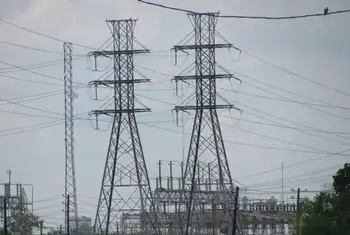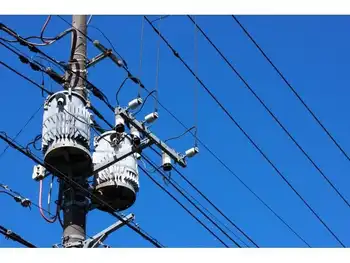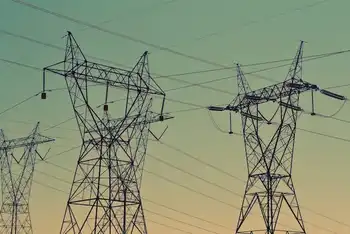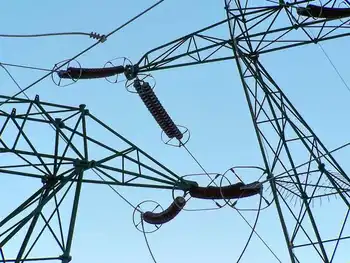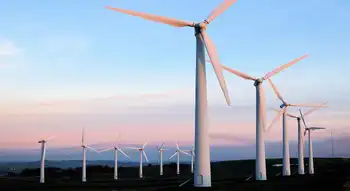ClimateSmart program receives approval for LEED points
By PR Newswire
High Voltage Maintenance Training Online
Our customized live online or in‑person group training can be delivered to your staff at your location.

- Live Online
- 12 hours Instructor-led
- Group Training Available
The utility is partnering with Global Green USA and Habitat for Humanity International to build LEED-certified Habitat homes. In addition, customers participating in PG&E's ClimateSmart program can now receive LEED credit for enrolling their natural gas accounts in the voluntary greenhouse gas (GHG) emission reduction program.
"Supporting our customers in their efforts to address climate change is essential as we all work to protect California's most precious resources for future generations," said Tom Bottorff, senior vice president of regulatory relations for PG&E. "We're honored to make renewable energy, energy efficiency education and voluntary carbon offsets available to all the diverse Californian communities we serve."
The U.S. Green Building Council's LEED (Leadership in Energy and Environmental Design) Green Building Rating System is a voluntary third party rating system where credits are earned for satisfying specified green building criteria. Projects are evaluated within five environmental categories, including Sustainable Sites, Water Efficiency, Energy and Atmosphere, Materials and Resources, and Indoor Environmental Quality, with additional points available for innovative design elements. Certified, Silver, Gold and Platinum levels of green building certification are awarded based on the total credits earned.
PG&E is granting $200,000 to Global Green USA for the LEED-Silver certification of 14 Habitat-built homes. The effort is in support of Global Green's and Habitat for Humanity's work that combines green building technical assistance, education and peer-to-peer knowledge. PG&E's charitable donation will cover the specifications necessary to achieve LEED certification of Habitat homes to be located in Oakland, Strawberry, Fresno and Cotati.
"Through our work with Habitat and others over the past decade, we've proven that building green affordable housing makes housing an even greater community asset," said Walker Wells, green urbanism director for Global Green USA. "It lowers monthly utility bills, improves residents' health and decreases global warming pollution."
"We are excited about our partnership with PG&E," said Mark Cozet, Habitat for Humanity International's senior vice president of development. "With PG&E's help, our partner families will not only obtain safe, decent and affordable houses, but will pay less to maintain them due to the benefits of owning an energy-efficient home."
PG&E's partnership with Global Green USA builds on the utility's one-of-a-kind Solar Habitat program, which covers the costs of solar installations on all Habitat for Humanity homes built within PG&E's service area. PG&E's Solar Habitat program began in 2005 by donating solar systems on 12 homes supporting the Oakland-based East Bay affiliate of Habitat for Humanity. Since then, the program has expanded dramatically to 18 Habitat affiliates and PG&E-sponsored solar installations on 128 homes.
Through this program, PG&E provides expertise, volunteers and charitable grants to help build energy-efficient homes and install roof-top solar powered systems. In addition to lowering energy bills for these families, the program seeks to promote energy literacy throughout underserved communities and increase enrollment in PG&E's free energy assistance programs for low-income families.
As a result, Habitat homeowners need to buy less power to meet their basic energy needs, which saves them money and protects the environment.
For more than 10 years, PG&E has supported local Habitat for Humanity affiliates with contributions in excess of $635,000 charitable dollars for general operating support, home sponsorship and event sponsorship. In 2007, PG&E employees expressed their personal commitment to Habitat for Humanity by donating more than 3,500 hours of their time in support of the organization's projects.
PG&E's ClimateSmart program today announced that it was approved for LEED credit by the U.S. Green Building Council. PG&E's voluntary GHG emission reduction program is eligible for one of the "Innovation in Design" credits awarded to qualifying LEED-certified projects. PG&E is the first utility to offer a program to its customers enabling them to receive LEED credit for a natural gas GHG emission reduction.
PG&E's ClimateSmart program is a tax-deductible, voluntary program that allows customers to balance out the emissions that are produced by the energy they use, making their energy use climate neutral. To date, more than 33,000 customers — including residents, businesses and cities — have enrolled in the program, which invests 100 percent of customer funds in GHG emission reduction projects, such as the Garcia River Forest in Mendocino County and the Lompico Headwaters Forest in the Santa Cruz Mountains.
PG&E enrolled as the first participant in the ClimateSmart program by committing more than $1.5 million of shareholder funding from 2007 to 2009 to make all of the energy use in the company's offices, service centers, maintenance facilities and other company buildings climate neutral.
When a customer enrolls in ClimateSmart, PG&E calculates the actual amount of greenhouse gas emissions produced by the customer's electricity and gas usage each month and adds the amount needed to make the customer's energy use climate neutral to the monthly bill. For the average residential customer, the cost is less than $5 per month.
PG&E proudly provides its customers with among the cleanest energy in the nation. On average, more than 50 percent of the energy delivered to the 15 million Californians it serves is carbon free. Through its leading energy efficiency and demand response programs, the company has helped prevent more than 135 million tons of carbon dioxide from entering the atmosphere, while saving its customers nearly $22 billion.





